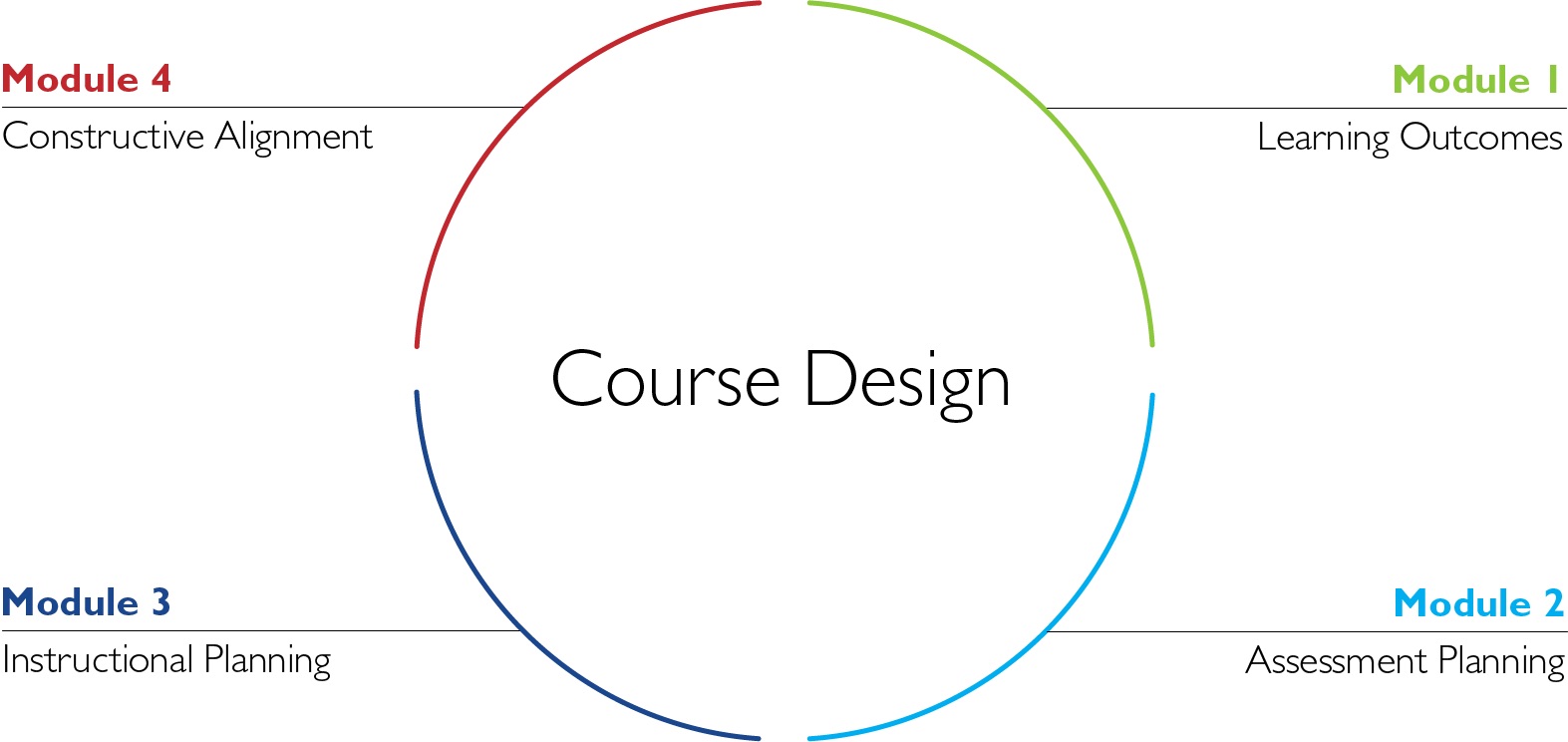Introduction to course design
Design your course(s)
A good model for approaching course design is the backwards design model. This simply means beginning at the end – your intended – then aligning your and with these learning outcomes, which is also called (Biggs, 1996). When you align these three elements of your course, you ensure an optimal learning environment where students can acquire and construct their own knowledge and develop solid competencies.
Steps to course design
To begin, you should first identify your desired results for student learning by the end of your course:
- What essential knowledge, skills, abilities, competencies, attitudes, values, etc. do you want students to possess by the end of the course?
Once your learning outcomes are identified, you should determine what assessment criteria would provide appropriate evidence as to whether and to what extent students have learned what you intended for them, and what assessment tasks would be best suited to gather this data:
- What would allow them to demonstrate that they possess this knowledge, skill, value, ability, competency, attitude, etc?
Once you have identified your learning indicators, you can plan the teaching and learning details of your course:
- What course content, instructional practices and learning experiences will best support student learning?

Course design learning outcomes
Learning Outcomes
By the end of this course, you will be able to design a course that:
- Is based on student-focussed learning outcomes
- Aligns assessment tasks to course learning outcomes
- Targets instructional strategies and learning activities that align with assessment practices
References
Biggs, J. (1996). Enhancing teaching through constructive alignment. Higher Education, 32, 347- 364.
A statement that describes what a student is expected to learn from a single class, a course or an entire program.
An activity designed to support learners in developing their knowledge, skills or attitudes.
An activity in which learners are asked to successfully demonstrate their level/extent of knowledge, performance of skills, or development of attitudes.
An approach to course designing beginning with the end, the learning outcomes, and crafting alignment with assessments, teaching activities and content.

